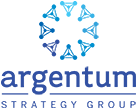 Every company has internal jargon that has evolved to speed conversations, including those about the benefits of its products and services. At its extreme, this might mean using inscrutable acronyms like those Kraft Foods used to use (anyone out there remember CIS, STOC, DRF). In fact, in the early 90’s, every new brand management employee was issued a Kraft to English dictionary!
Every company has internal jargon that has evolved to speed conversations, including those about the benefits of its products and services. At its extreme, this might mean using inscrutable acronyms like those Kraft Foods used to use (anyone out there remember CIS, STOC, DRF). In fact, in the early 90’s, every new brand management employee was issued a Kraft to English dictionary!
Fortunately, for most companies that Argentum works with, the jargon is not as extreme as at Kraft, which, in some ways makes it harder to interpret. For example, when one client team talked about their company’s “service excellence,” they all knew that at their company it meant 1) a real human always answers the phone within three rings and 2) the company has an industry-leading fix rate of 95%.
But a company’s internal lingo is generally not at all obvious to people who aren’t immersed in that organization. And this is especially problematic when you’re trying to develop succinct, impactful marketing language. You want to be sure that your messaging is clear and easy to understand for everyone, especially potential customers.
That’s why we spend a lot of time in positioning sessions unpacking words like “Quality” and “Value.” Together with our clients, we dig below the generic words to explore what those words mean to them in relation to their specific products and services because sometimes your deeply entrenched words, while grounded in your expertise and certifications, might be ambiguous to others. Three client examples come to mind.
The first is FourSight, which developed the FourSight Thinking Profile to help teams solve problems together more effectively. The assessment is used by organizations like NASA, Nike, IBM and UPS, and has been taught at schools like Harvard, MIT and Stanford. The FourSight tool is grounded in 65 years of research, and most people on the team have at least a Master of Science in Creativity.
While working with FourSight, it became apparent that when the team said “creativity,” they meant something very different than when most of us say “creativity.” To FourSight, creativity is not about slinkies and squish balls. It’s all about solving problems and how individuals and groups approach the problem-solving process.
Because of this, after lots of conversation and internal debate, FourSight began shifting its messaging to focus less on creativity and more on problem-solving. As Sarah Thurber, Managing Partner of FourSight says “It took us years to get there, but here we are! We now call ourselves a ‘collaborative problem-solving system.’ And it’s thanks to Argentum!”
FourSight has a new tagline, too: “Collaborate Smarter. Solve Problems Faster.”
The second example is a former adventure travel client that was in the process of buying a cycling trip company. When we did research with previous guests of both companies, we discovered something fascinating: People, even the guests who had been on bike trips, think that “cycling” sounds hard and that it’s something you have to train for, it’s kind of intense and not necessarily fun. However people do think that “bike touring” sounds more approachable and vacation-y.
Based on that, my client eliminated the use of the word “cycling” and we focused more on “bikes” and “bike touring” in the messaging.
Finally, a very recent example from our client Montessori One, an infant through Grade 5 school in Albuquerque. Here, the issue was that the Montessori Method itself can seem mysterious to people not familiar with this time-tested way of teaching, grounded in the science of childhood development. On top of that, the typical context most parents have for education is their own conventional learning experience, which is quite different than Montessori.
That context disparity is not helped when many of the words and phrases used to describe the Montessori process include things like “soft skills,” “student-directed learning,” and “Cosmic Education.” Add to that the fact that all Montessori teachers (“Guides”) are certified in the Montessori Method, and you have a group of people talking about educating children in a way that is very different than that of traditional schools.
During our interviews with parents, it became clear that even for parents with enrolled children, Montessori was still challenging for them to fully understand. But what was even more evident was that parents were okay with not being deeply immersed in the vocabulary of the Montessori Method. What they really wanted to understand was if their child was learning what they needed to be successful in the future.
Based on this, Montessori One’s messaging will be shifting to talk about what the school does in a way that is grounded in the educational context that parents already know and understand. This will help prospective parents ease into their child’s different educational experience.
This is a great example of why it’s important to remember that your messaging is a “Way In” to a conversation with your potential customers. It is not the entire conversation!
As you and your company work on developing more succinct messaging, pay attention to the words you’re using that might not be as clear as you think. There’s never any harm with being succinct and jargon-free! This is true even if your category is a deeply technical one. The goal of positioning is always for your messaging to be clear and easy for anyone to understand.
